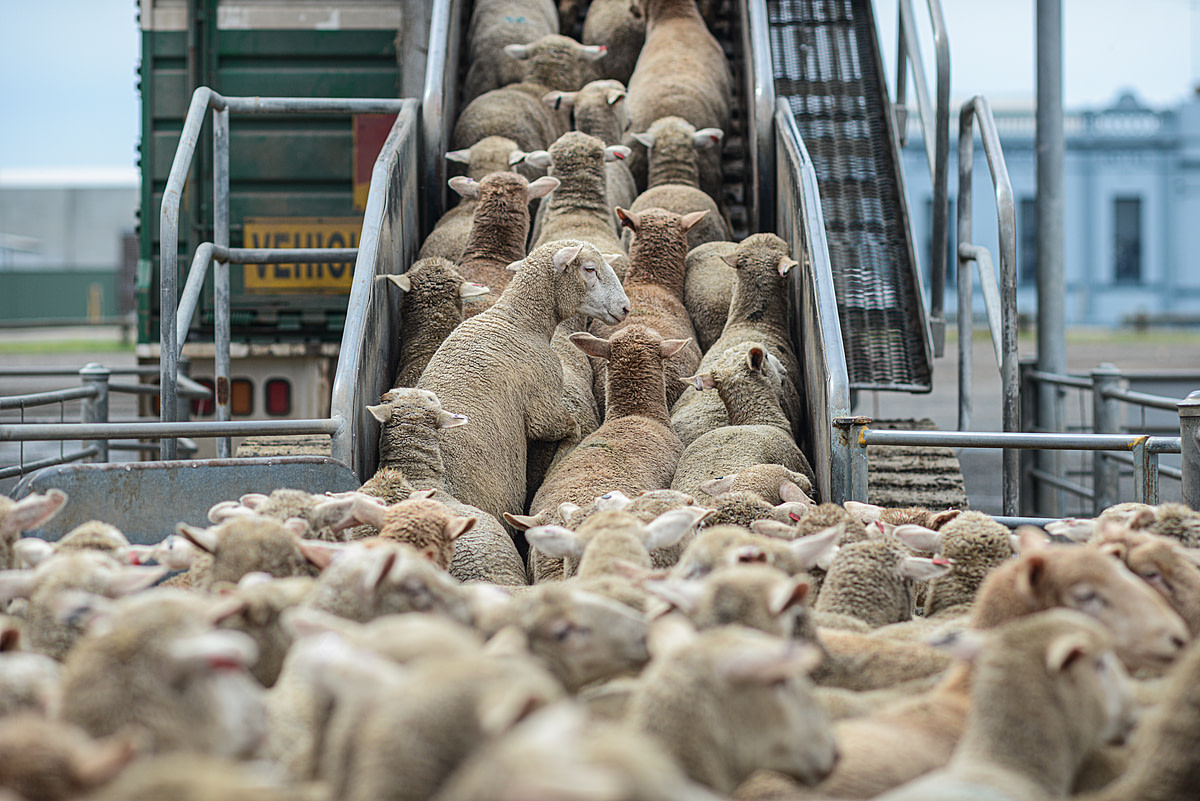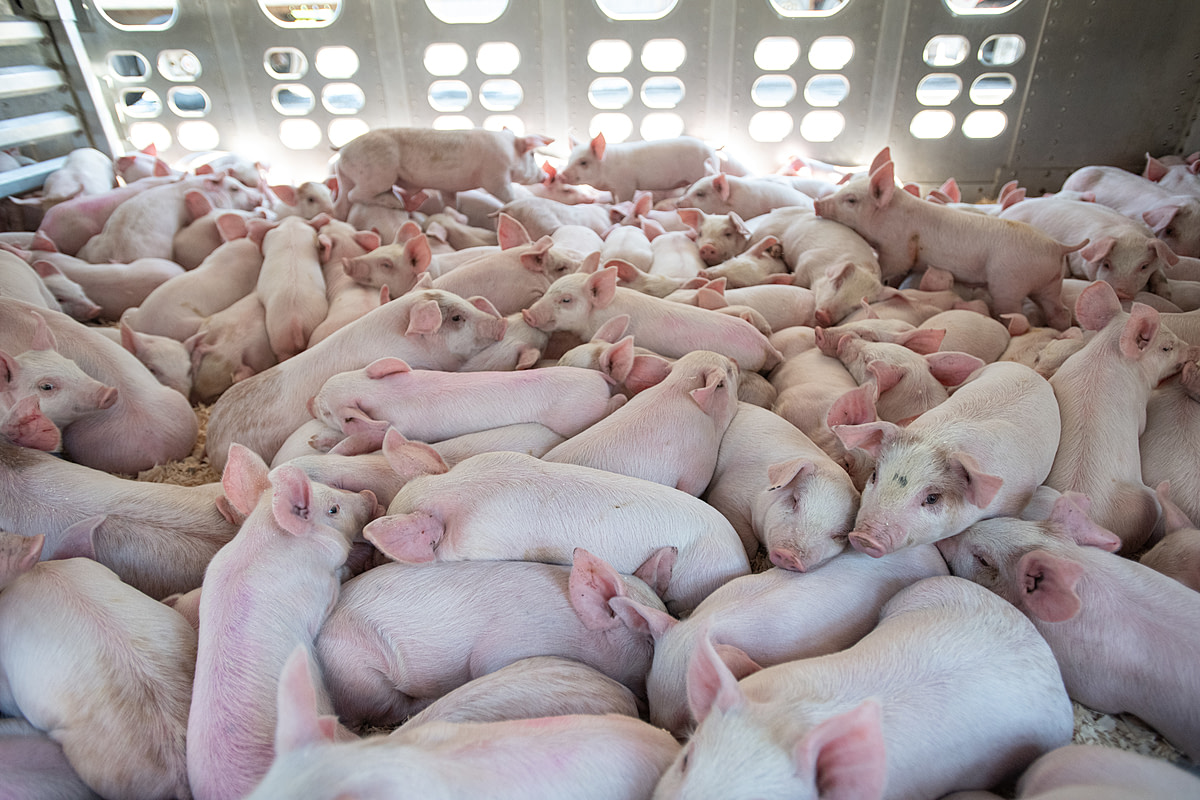Sheep being loaded onto trucks from the sale yards. Australia, 2013.
Jo-Anne McArthur / We Animals
Previously unpublished records have revealed new evidence on the extent of the European Union’s role in the controversial long distance transport of farmed animals. Today, AGtivist Agency publishes an overview of these findings in their article ’Hell Journeys’, which features visuals from We Animals’ international reportage of this industry’s impacts on animals.
“As We Animals photographers regularly show, animal transport is a significant stressor on animals – in the form of heat and motion stress. They also regularly go without food and water for extended periods. And we also know that many die in the process.” — Verity Portas, Journalist for AGtivist Agency
A piglet looks out from inside a crowded transport trailer. The 6,000 piglets crammed inside this transport truck are on an eight-hour journey. Canada, 2022.
Jo-Anne McArthur / We Animals
The documents show, in granular detail, how millions of farmed animals were trucked, shipped and flown both within Europe and internationally between 2021-2023 on journeys lasting eight hours or more.
“Although we knew that millions of animals were enduring cruel and unnecessary journeys in the name of profit, this research shows that the situation is far worse than we had feared. The EU must address this as a matter of urgency.” — Peter Stevenson, Chief Policy Adviser for Compassion in World Farming
Campaigners have long criticized the live transport trade, citing overcrowding, exhaustion, dehydration and stress as key factors affecting the health and welfare of animals. Additionally, there are growing concerns over disease spread from animals contaminated with antibiotic resistant infections. To date, countries including the UK, Brazil, Australia and New Zealand have already committed to tighter animal welfare regulations on live exports in response to global pressures.
A young bovine stares outwards through an opening inside the back of a transport truck that has arrived at a cattle slaughterhouse. The photojournalist created this image during a vigil organized by Buenos Aires Animal Save. Argentina, 2018.
Martina Zamudio / We Animals
These new findings are part of a wider case study of data published today in a joint report by Compassion In World Farming and Eurogroup For Animals, ahead of the EU’s announcement of proposed amendments to the trade’s regulations next month. The report calls for a number of improvements, including strict limits to be placed on journey times between EU nations and the outlawing of the transport of unweaned livestock.
“There are so many reasons to end live export. Here is one of them. Many animals who die while being transported by sea often get thrown overboard. Their ears are usually cut off first, so that the bodies aren’t found with tags that identify their country or origin, or the boat they were travelling on.” —Jo-Anne McArthur, We Animals Founder & Animal Photojournalist















Read more about these new findings via AGtivist Agency.
Explore more visuals from We Animal’s documentation of global animal transport.






